Ge Yu
Legal$Δ$: Enhancing Legal Reasoning in LLMs via Reinforcement Learning with Chain-of-Thought Guided Information Gain
Aug 17, 2025
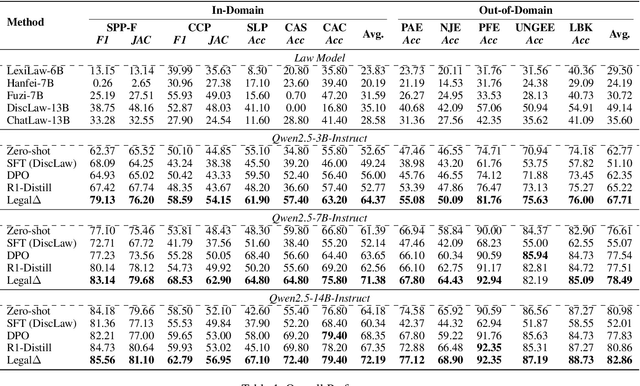

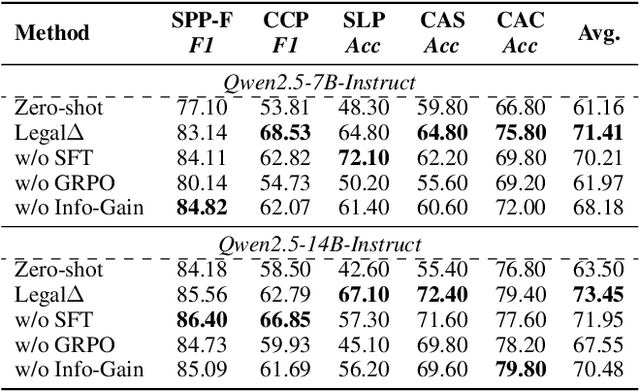
Abstract:Legal Artificial Intelligence (LegalAI) has achieved notable advances in automating judicial decision-making with the support of Large Language Models (LLMs). However, existing legal LLMs still struggle to generate reliable and interpretable reasoning processes. They often default to fast-thinking behavior by producing direct answers without explicit multi-step reasoning, limiting their effectiveness in complex legal scenarios that demand rigorous justification. To address this challenge, we propose Legal$\Delta$, a reinforcement learning framework designed to enhance legal reasoning through chain-of-thought guided information gain. During training, Legal$\Delta$ employs a dual-mode input setup-comprising direct answer and reasoning-augmented modes-and maximizes the information gain between them. This encourages the model to acquire meaningful reasoning patterns rather than generating superficial or redundant explanations. Legal$\Delta$ follows a two-stage approach: (1) distilling latent reasoning capabilities from a powerful Large Reasoning Model (LRM), DeepSeek-R1, and (2) refining reasoning quality via differential comparisons, combined with a multidimensional reward mechanism that assesses both structural coherence and legal-domain specificity. Experimental results on multiple legal reasoning tasks demonstrate that Legal$\Delta$ outperforms strong baselines in both accuracy and interpretability. It consistently produces more robust and trustworthy legal judgments without relying on labeled preference data. All code and data will be released at https://github.com/NEUIR/LegalDelta.
Advancing Knowledge Tracing by Exploring Follow-up Performance Trends
Aug 11, 2025


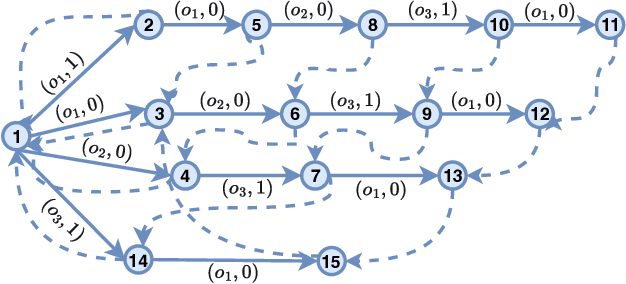
Abstract:Intelligent Tutoring Systems (ITS), such as Massive Open Online Courses, offer new opportunities for human learning. At the core of such systems, knowledge tracing (KT) predicts students' future performance by analyzing their historical learning activities, enabling an accurate evaluation of students' knowledge states over time. We show that existing KT methods often encounter correlation conflicts when analyzing the relationships between historical learning sequences and future performance. To address such conflicts, we propose to extract so-called Follow-up Performance Trends (FPTs) from historical ITS data and to incorporate them into KT. We propose a method called Forward-Looking Knowledge Tracing (FINER) that combines historical learning sequences with FPTs to enhance student performance prediction accuracy. FINER constructs learning patterns that facilitate the retrieval of FPTs from historical ITS data in linear time; FINER includes a novel similarity-aware attention mechanism that aggregates FPTs based on both frequency and contextual similarity; and FINER offers means of combining FPTs and historical learning sequences to enable more accurate prediction of student future performance. Experiments on six real-world datasets show that FINER can outperform ten state-of-the-art KT methods, increasing accuracy by 8.74% to 84.85%.
Automated Formalization via Conceptual Retrieval-Augmented LLMs
Aug 09, 2025



Abstract:Interactive theorem provers (ITPs) require manual formalization, which is labor-intensive and demands expert knowledge. While automated formalization offers a potential solution, it faces two major challenges: model hallucination (e.g., undefined predicates, symbol misuse, and version incompatibility) and the semantic gap caused by ambiguous or missing premises in natural language descriptions. To address these issues, we propose CRAMF, a Concept-driven Retrieval-Augmented Mathematical Formalization framework. CRAMF enhances LLM-based autoformalization by retrieving formal definitions of core mathematical concepts, providing contextual grounding during code generation. However, applying retrieval-augmented generation (RAG) in this setting is non-trivial due to the lack of structured knowledge bases, the polymorphic nature of mathematical concepts, and the high precision required in formal retrieval. We introduce a framework for automatically constructing a concept-definition knowledge base from Mathlib4, the standard mathematical library for the Lean 4 theorem prover, indexing over 26,000 formal definitions and 1,000+ core mathematical concepts. To address conceptual polymorphism, we propose contextual query augmentation with domain- and application-level signals. In addition, we design a dual-channel hybrid retrieval strategy with reranking to ensure accurate and relevant definition retrieval. Experiments on miniF2F, ProofNet, and our newly proposed AdvancedMath benchmark show that CRAMF can be seamlessly integrated into LLM-based autoformalizers, yielding consistent improvements in translation accuracy, achieving up to 62.1% and an average of 29.9% relative improvement.
Resource-Limited Joint Multimodal Sentiment Reasoning and Classification via Chain-of-Thought Enhancement and Distillation
Aug 07, 2025Abstract:The surge in rich multimodal content on social media platforms has greatly advanced Multimodal Sentiment Analysis (MSA), with Large Language Models (LLMs) further accelerating progress in this field. Current approaches primarily leverage the knowledge and reasoning capabilities of parameter-heavy (Multimodal) LLMs for sentiment classification, overlooking autonomous multimodal sentiment reasoning generation in resource-constrained environments. Therefore, we focus on the Resource-Limited Joint Multimodal Sentiment Reasoning and Classification task, JMSRC, which simultaneously performs multimodal sentiment reasoning chain generation and sentiment classification only with a lightweight model. We propose a Multimodal Chain-of-Thought Reasoning Distillation model, MulCoT-RD, designed for JMSRC that employs a "Teacher-Assistant-Student" distillation paradigm to address deployment constraints in resource-limited environments. We first leverage a high-performance Multimodal Large Language Model (MLLM) to generate the initial reasoning dataset and train a medium-sized assistant model with a multi-task learning mechanism. A lightweight student model is jointly trained to perform efficient multimodal sentiment reasoning generation and classification. Extensive experiments on four datasets demonstrate that MulCoT-RD with only 3B parameters achieves strong performance on JMSRC, while exhibiting robust generalization and enhanced interpretability.
ReCUT: Balancing Reasoning Length and Accuracy in LLMs via Stepwise Trails and Preference Optimization
Jun 12, 2025Abstract:Recent advances in Chain-of-Thought (CoT) prompting have substantially improved the reasoning capabilities of Large Language Models (LLMs). However, these methods often suffer from overthinking, leading to unnecessarily lengthy or redundant reasoning traces. Existing approaches attempt to mitigate this issue through curating multiple reasoning chains for training LLMs, but their effectiveness is often constrained by the quality of the generated data and prone to overfitting. To address the challenge, we propose Reasoning Compression ThroUgh Stepwise Trials (ReCUT), a novel method aimed at balancing the accuracy and length of reasoning trajectory. Specifically, ReCUT employs a stepwise exploration mechanism and a long-short switched sampling strategy, enabling LLMs to incrementally generate diverse reasoning paths. These paths are evaluated and used to construct preference pairs to train two specialized models (Gemini LLMs)-one optimized for reasoning accuracy, the other for shorter reasoning. A final integrated model is obtained by interpolating the parameters of these two models. Experimental results across multiple math reasoning datasets and backbone models demonstrate that ReCUT significantly reduces reasoning lengths by approximately 30-50%, while maintaining or improving reasoning accuracy compared to various baselines. All codes and data will be released via https://github.com/NEUIR/ReCUT.
ConsRec: Denoising Sequential Recommendation through User-Consistent Preference Modeling
May 28, 2025Abstract:User-item interaction histories are pivotal for sequential recommendation systems but often include noise, such as unintended clicks or actions that fail to reflect genuine user preferences. To address this issue, we propose the User-Consistent Preference-based Sequential Recommendation System (ConsRec), designed to capture stable user preferences and filter noisy items from interaction histories. Specifically, ConsRec constructs a user-interacted item graph, learns item similarities from their text representations, and then extracts the maximum connected subgraph from the user-interacted item graph for denoising items. Experimental results on the Yelp and Amazon Product datasets illustrate that ConsRec achieves a 13% improvement over baseline recommendation models, showing its effectiveness in denoising user-interacted items. Further analysis reveals that the denoised interaction histories form semantically tighter clusters of user-preferred items, leading to higher relevance scores for ground-truth targets and more accurate recommendations. All codes are available at https://github.com/NEUIR/ConsRec.
Learning to Route Queries Across Knowledge Bases for Step-wise Retrieval-Augmented Reasoning
May 28, 2025Abstract:Multimodal Retrieval-Augmented Generation (MRAG) has shown promise in mitigating hallucinations in Multimodal Large Language Models (MLLMs) by incorporating external knowledge during generation. Existing MRAG methods typically adopt a static retrieval pipeline that fetches relevant information from multiple Knowledge Bases (KBs), followed by a refinement step. However, these approaches overlook the reasoning and planning capabilities of MLLMs to dynamically determine how to interact with different KBs during the reasoning process. To address this limitation, we propose R1-Router, a novel MRAG framework that learns to decide when and where to retrieve knowledge based on the evolving reasoning state. Specifically, R1-Router can generate follow-up queries according to the current reasoning step, routing these intermediate queries to the most suitable KB, and integrating external knowledge into a coherent reasoning trajectory to answer the original query. Furthermore, we introduce Step-wise Group Relative Policy Optimization (Step-GRPO), a tailored reinforcement learning algorithm that assigns step-specific rewards to optimize the reasoning behavior of MLLMs. Experimental results on various open-domain QA benchmarks across multiple modalities demonstrate that R1-Router outperforms baseline models by over 7%. Further analysis shows that R1-Router can adaptively and effectively leverage diverse KBs, reducing unnecessary retrievals and improving both efficiency and accuracy.
EULER: Enhancing the Reasoning Ability of Large Language Models through Error-Induced Learning
May 28, 2025Abstract:Large Language Models (LLMs) have demonstrated strong reasoning capabilities and achieved promising results in mathematical problem-solving tasks. Learning from errors offers the potential to further enhance the performance of LLMs during Supervised Fine-Tuning (SFT). However, the errors in synthesized solutions are typically gathered from sampling trails, making it challenging to generate solution errors for each mathematical problem. This paper introduces the Error-IndUced LEaRning (EULER) model, which aims to develop an error exposure model that generates high-quality solution errors to enhance the mathematical reasoning capabilities of LLMs. Specifically, EULER optimizes the error exposure model to increase the generation probability of self-made solution errors while utilizing solutions produced by a superior LLM to regularize the generation quality. Our experiments across various mathematical problem datasets demonstrate the effectiveness of the EULER model, achieving an improvement of over 4% compared to all baseline models. Further analysis reveals that EULER is capable of synthesizing more challenging and educational solution errors, which facilitate both the training and inference processes of LLMs. All codes are available at https://github.com/NEUIR/EULER.
Enhancing the Patent Matching Capability of Large Language Models via the Memory Graph
Apr 21, 2025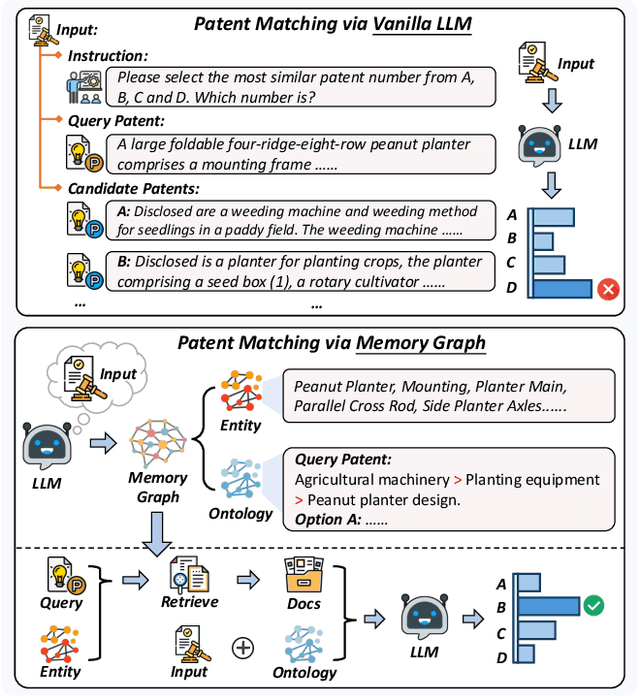
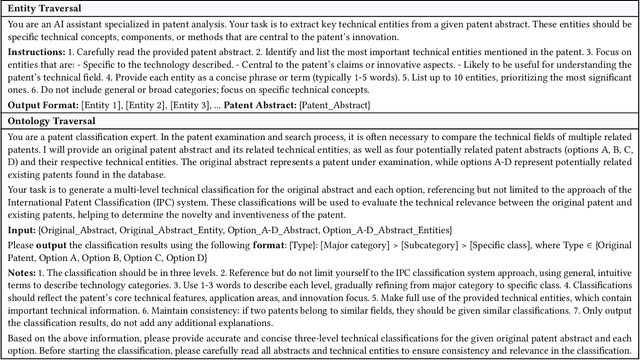
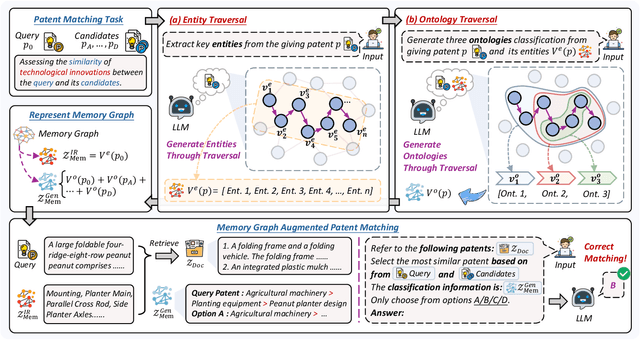
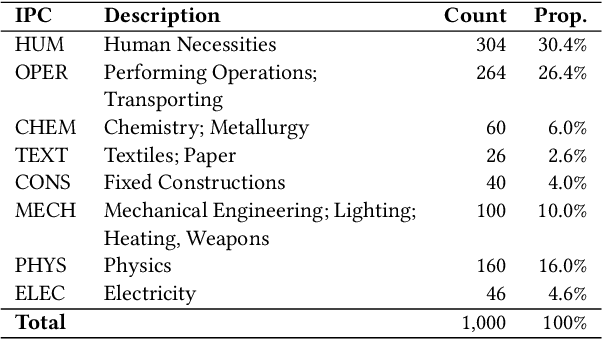
Abstract:Intellectual Property (IP) management involves strategically protecting and utilizing intellectual assets to enhance organizational innovation, competitiveness, and value creation. Patent matching is a crucial task in intellectual property management, which facilitates the organization and utilization of patents. Existing models often rely on the emergent capabilities of Large Language Models (LLMs) and leverage them to identify related patents directly. However, these methods usually depend on matching keywords and overlook the hierarchical classification and categorical relationships of patents. In this paper, we propose MemGraph, a method that augments the patent matching capabilities of LLMs by incorporating a memory graph derived from their parametric memory. Specifically, MemGraph prompts LLMs to traverse their memory to identify relevant entities within patents, followed by attributing these entities to corresponding ontologies. After traversing the memory graph, we utilize extracted entities and ontologies to improve the capability of LLM in comprehending the semantics of patents. Experimental results on the PatentMatch dataset demonstrate the effectiveness of MemGraph, achieving a 17.68% performance improvement over baseline LLMs. The further analysis highlights the generalization ability of MemGraph across various LLMs, both in-domain and out-of-domain, and its capacity to enhance the internal reasoning processes of LLMs during patent matching. All data and codes are available at https://github.com/NEUIR/MemGraph.
VM-BHINet:Vision Mamba Bimanual Hand Interaction Network for 3D Interacting Hand Mesh Recovery From a Single RGB Image
Apr 20, 2025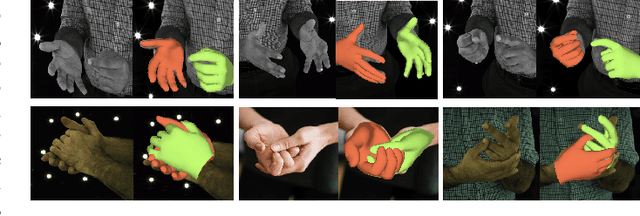



Abstract:Understanding bimanual hand interactions is essential for realistic 3D pose and shape reconstruction. However, existing methods struggle with occlusions, ambiguous appearances, and computational inefficiencies. To address these challenges, we propose Vision Mamba Bimanual Hand Interaction Network (VM-BHINet), introducing state space models (SSMs) into hand reconstruction to enhance interaction modeling while improving computational efficiency. The core component, Vision Mamba Interaction Feature Extraction Block (VM-IFEBlock), combines SSMs with local and global feature operations, enabling deep understanding of hand interactions. Experiments on the InterHand2.6M dataset show that VM-BHINet reduces Mean per-joint position error (MPJPE) and Mean per-vertex position error (MPVPE) by 2-3%, significantly surpassing state-of-the-art methods.
 Add to Chrome
Add to Chrome Add to Firefox
Add to Firefox Add to Edge
Add to Edge